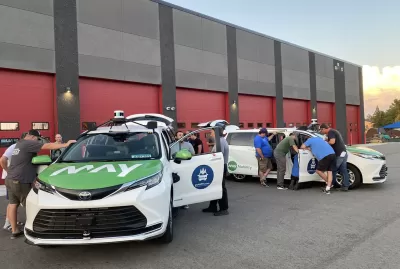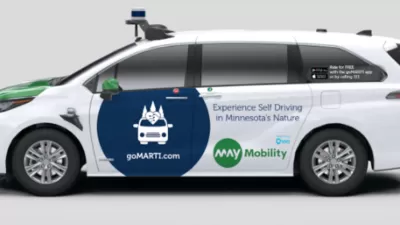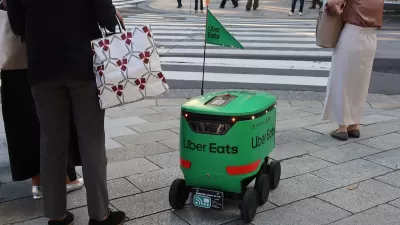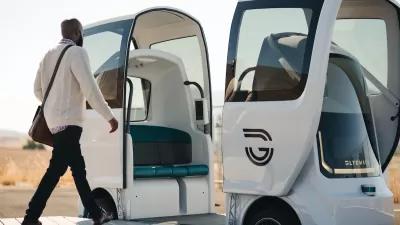The town launched a five-vehicle fleet aimed at improving mobility for residents in the rural community.

Grand Rapids, Minnesota became the first rural U.S. community to test an autonomous shuttle system with the launch of a fleet of five Toyota Sienna vans equipped with autonomous driving technology by May Mobility.
According to an article by H. Jiahong Pan in the Daily Yonder, “These vans took to the road in September, and for the following 18 months they will navigate around Grand Rapids, located in northern Minnesota, in conditions unfamiliar to them: snow, extreme cold, and lots and lots of trees.” The autonomous vans, which come with a human driver ready to take over if needed, are free and can be requested by phone or mobile app and stop at 70 locations.
The program, if successful, could be the model for improving mobility for rural residents, particularly those living with disabilities or the elderly. “Meanwhile, communities struggle to keep up with building and maintaining the infrastructure they need to get around. Rural communities, such as Grand Rapids, often lack sidewalks on many streets, and while they want to build them out, not all of their streets are wide enough to handle them.”
Minnesota’s harsh winter weather could pose challenges to the shuttles, as could the unique needs of riders with disabilities who may require human assistance. “For now, the goMARTI operation is staffed by a number of full and part-time workers, some of whom have backgrounds in computer science.”
Similar programs may become more common in coming years, with $500 million in federal infrastructure funding dedicated to autonomous public transit development.
FULL STORY: In Northern Minnesota, Autonomous Vehicles Are Hitting Rural Roads

Maui's Vacation Rental Debate Turns Ugly
Verbal attacks, misinformation campaigns and fistfights plague a high-stakes debate to convert thousands of vacation rentals into long-term housing.

Planetizen Federal Action Tracker
A weekly monitor of how Trump’s orders and actions are impacting planners and planning in America.

Chicago’s Ghost Rails
Just beneath the surface of the modern city lie the remnants of its expansive early 20th-century streetcar system.

Bend, Oregon Zoning Reforms Prioritize Small-Scale Housing
The city altered its zoning code to allow multi-family housing and eliminated parking mandates citywide.

Amtrak Cutting Jobs, Funding to High-Speed Rail
The agency plans to cut 10 percent of its workforce and has confirmed it will not fund new high-speed rail projects.

LA Denies Basic Services to Unhoused Residents
The city has repeatedly failed to respond to requests for trash pickup at encampment sites, and eliminated a program that provided mobile showers and toilets.
Urban Design for Planners 1: Software Tools
This six-course series explores essential urban design concepts using open source software and equips planners with the tools they need to participate fully in the urban design process.
Planning for Universal Design
Learn the tools for implementing Universal Design in planning regulations.
planning NEXT
Appalachian Highlands Housing Partners
Mpact (founded as Rail~Volution)
City of Camden Redevelopment Agency
City of Astoria
City of Portland
City of Laramie





























